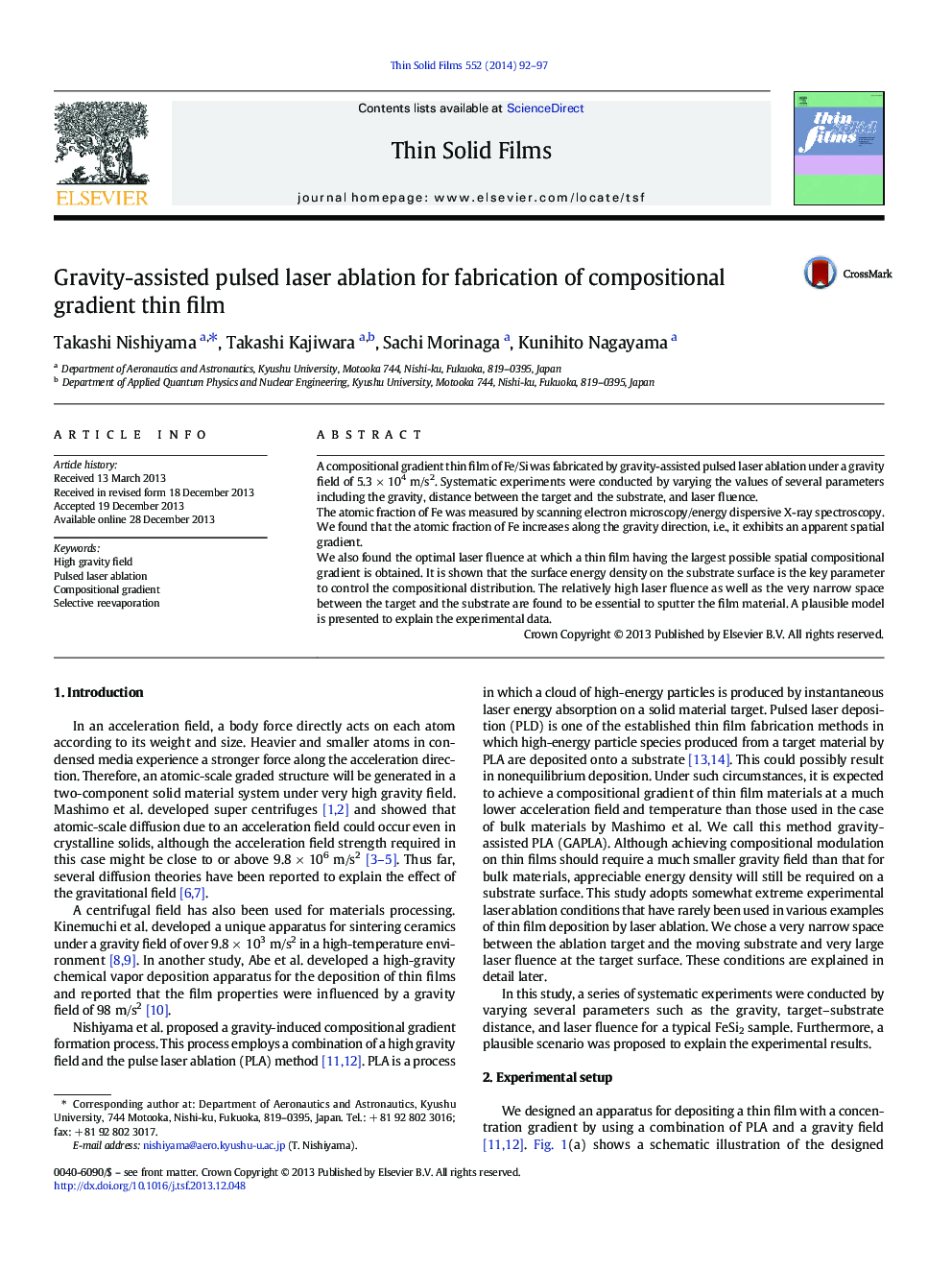| Article ID | Journal | Published Year | Pages | File Type |
|---|---|---|---|---|
| 1665690 | Thin Solid Films | 2014 | 6 Pages |
•Gravity-assisted pulsed laser ablation method (GAPLA) is established.•A compositional gradient thin film is fabricated by GAPLA under 5.3 × 104 m/s2 condition.•The surface energy density is an important parameter for GAPLA.•A compositional gradient is generated by selective reevaporation and not diffusion.
A compositional gradient thin film of Fe/Si was fabricated by gravity-assisted pulsed laser ablation under a gravity field of 5.3 × 104 m/s2. Systematic experiments were conducted by varying the values of several parameters including the gravity, distance between the target and the substrate, and laser fluence.The atomic fraction of Fe was measured by scanning electron microscopy/energy dispersive X-ray spectroscopy. We found that the atomic fraction of Fe increases along the gravity direction, i.e., it exhibits an apparent spatial gradient.We also found the optimal laser fluence at which a thin film having the largest possible spatial compositional gradient is obtained. It is shown that the surface energy density on the substrate surface is the key parameter to control the compositional distribution. The relatively high laser fluence as well as the very narrow space between the target and the substrate are found to be essential to sputter the film material. A plausible model is presented to explain the experimental data.
